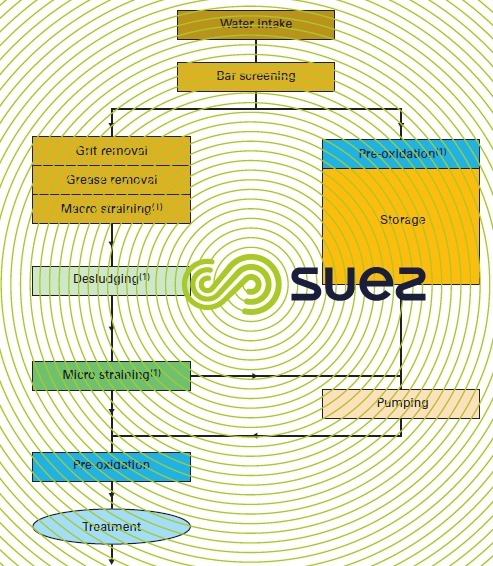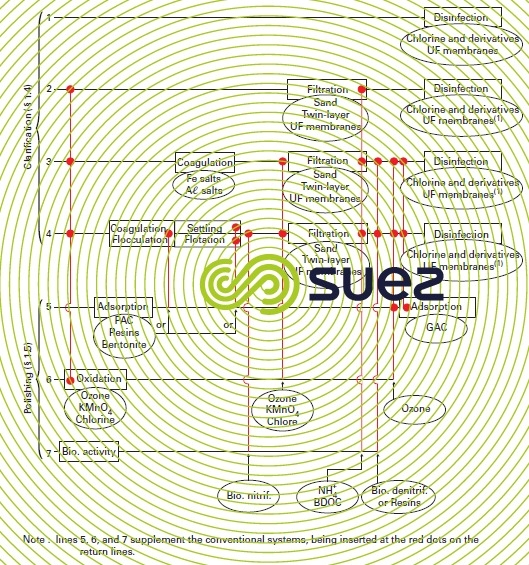surface water treatment systems
Reading time:As previously noted, groundwater sources “influenced by surface water” must also be included in this category.
Figures 1 and 2 respectively, group the basic treatment stages applicable primarily in water pre-treatment and then in the water’s complete treatment and, if applicable, its polishing.






It is clear that many potential solutions to producing the desired water quality are available and that these have to be implemented subject to a certain number of simple rules that consider, separately, the removal efficiency of the various contaminants at the different stages of the treatment train, based on:
- the state in which they are present in the water:
- floating;
- suspension (settling naturally);
- colloidal (settling after coagulation);
- dissolved;
- ion;
- their respective size (in the case of suspended solids):
- 150 µ: micro-screening and/or grit removal;
- 150-10 µ: desludging (micro-screening in exceptional cases);
- < 10 µ: clarification;
- their specific properties:
- colloidal (coagulation-flocculation and /or membrane filtration);
- dissolved matter (oxidation and/or adsorption and/or biological degradation);
- ion (precipitation and/or desalination membrane);
- pathogenic micro-organisms (chemical disinfection or irradiation or membrane filtration).
Finally, it must be confirmed that the n stages arranged in the overall treatment system enable the water quality objectives (standards, reliability…) to be achieved in the most cost-effective manner.
Bookmark tool
Click on the bookmark tool, highlight the last read paragraph to continue your reading later












